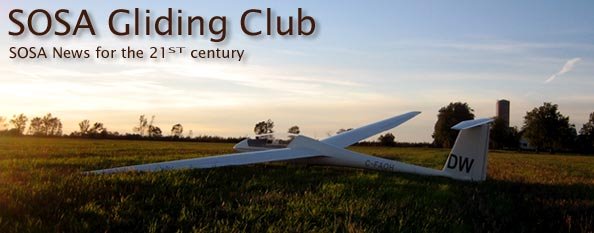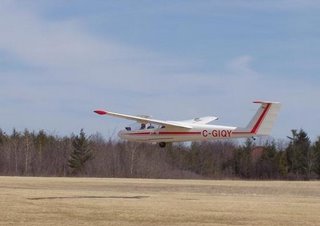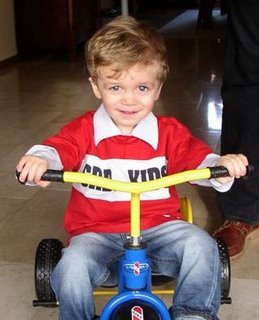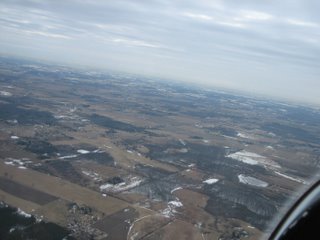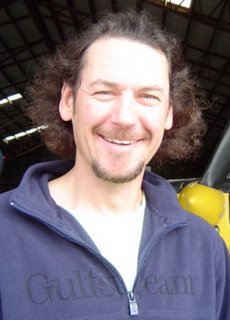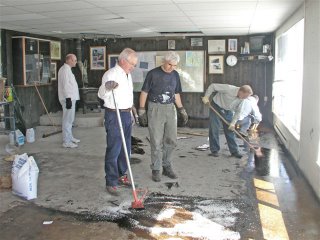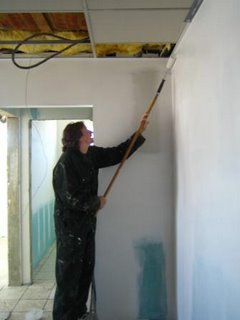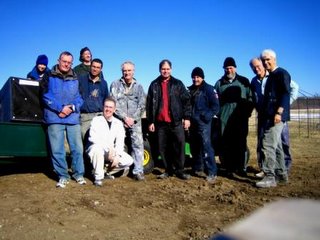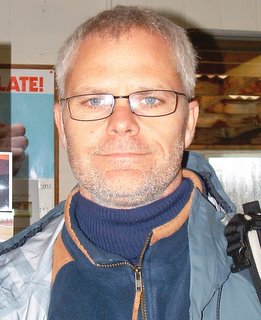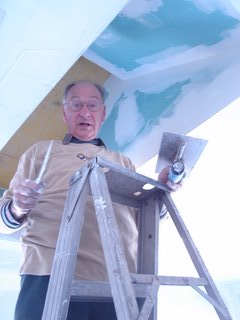
John Brennan's recollections on cross country flying.
Now that winter is slowly fading, I’ve been spending some time planning my cross country flights for the season. Part of this planning involves a lazy review of log books and an assessment of great and not so great flights.
I think that the best cross country flights I’ve seen at SOSA were often flown in low performance gliders. In my opinion, the best flights ever flown from SOSA, were 300 kilometer Out and Return flights in the Ka 8b. This glider claims to be about 27:1 and its real strength is the ability to climb in the weakest lift. The little sucker will climb at about 29 knots and no other glider at SOSA could out climb it. You cannot fly fast in the Ka 8 – you simply sit there and cruise along at 45 to 50 knots.
To my knowledge, two SOSA pilots flew the famous Bothwell 300 km. Out and Return course in this glider. The first was Peter Trounce and I recall that his flight time was about 81/2 hours in duration. Karl Svatos was the second hero and his time was in excess of 9 hours. Quite a feat.
Turning now to another gliding story, I discovered this account in my archives. It is recycled, it is old but there are still a few worthwhile lessons to be learned. So here goes:
SILVER TO DIAMONDS IN ONE EASY FLIGHT
Thursday, July 23, 1981
I had run for over a mile before I realized that the air felt different this bright summer morning. It was colder than normal and the sky was a deep shade of blue. After my shower, my wife Oonagh appeared and announced that today was THE day. Oonagh is an expert meteorologist who has never been wrong. She has that cold objectivity which is the exclusive property of long suffering soaring spouses.
Advice like that is hard to ignore, so the decision to go soaring was easy to make. I arrived at SOSA at 9:30 and found that I was one of the late arrivals. I had decided a long time ago that I was not going to waste a perfect soaring day for a 300 km. attempt, so I declared a 500 km. triangle – trying to kill two tasks in one flight.
That morning, five pilots declared 500 km. triangles:
“22” Peter Schwirtlick Std. Libelle – performance about 35:1
“T2” Paul Thompson Std. Cirrus – performance about 36:1
“94” Andy Gough Mini Nimbus – performance about 38:1
“14” Dick Robinson HP 14 – performance about 38:1
and yours truly,
“77” John Brennan ASW 20b – performance about 42:1
Peter, Paul, Andy and I decided to fly the 505 km. task in a clockwise direction – from Thamesville to Flesherton, while Dick decided to fly the triangle counterclockwise.
I took off at 11:00 a.m. loaded with water and had a difficult time staying aloft. T2, 94 and 22 left the field before me and I was feeling quite lonely as I struggled to gain some height. I started to drift away from SOSA at 11:15 and was able to maintain between 1,900 and 2,400 feet for the first 10 miles. For the first 20 miles, the indicated lift was 2 to 3 knots and the averager was telling me that my achieved climb rate was 1 ½ knots.
T2 and I flew together for a while and we lost sight of the other gliders. Conditions along the first leg were poor to S.W. Ontario average – i.e. poor to rotten. We never got above 4,000 feet on this leg. As we got closer to the Thamesville turn point, it became obvious that we were losing a race against a huge area of heavy cirrus which was approaching from the West.
I decided to dump my water – dumb move!
At this stage in the flight, I was over Bothwell at 3,500 feet and the Thamesville turnpoint was in deep cirrus cloud shadow. It had taken almost three hours to fly 150 km. so I decided that there was no point in trying to reach the turn point. As I turned for home the following exchange took place:
T2 – “Where are you going 77?”
77 – “Home”.
22 – “What do you mean – we can make it!”
77 – (Sniveling) – “My crew can’t drive”.
94 – (Obscure voice from nowhere) “Don’t worry John, we will retrieve you.”
Darn, there goes my excuse – back on course.
T2, 22 and 77 reached Thamesville at about the same time – time for the first leg a glorious speed of 54 km. per hour. At this rate, it would take seven more hours to complete the declared flight. We caught a 4 knot thermal over the turn point and I climbed to 4,000 feet under a solid overcast. At this time, I connected with a cloud street beneath the overcast which was parallel with the second leg of the triangle.
I set full negative flaps on the ASW 20 and started to run at 90 to 100 knots for the first time in the flight. The performance difference between the standard class gliders and the flapped ships became obvious as I pulled away from 22 and T2.
Fifteen miles out of the turnpoint, I shared a thermal with Andy in 94 for the first time. A short time later, I met Dick Robinson in his HP 14 who seemed to be making very good time. I did not envy his task of having to fly through the muck we endured for three hours.
About 25 miles out of the first turn point, I broke out of the overcast and the perfect soaring weather began. The lift improved to 6 – 8 knots and my speed director was showing an average climb rate of 5 ½ knots.
What a bone head – I could use water right now!
Navigation on the second leg proved to be more difficult than anticipated. While it was possible to pick out major features, the towns along the course line looked very similar. In fact, the first half of the second leg was strictly compass heading flying as the lift increased and became more predictable.
(Back then, we used maps and walked through 6 foot snow drifts to school)
One of the most interesting aspects of the flight was that waves or pulses of cold lake air seemed to be moving inland about every 20 miles or so. Consequently, it was necessary to slow down in the moist air and speed up when the air mass seemed drier.
Inter- thermal speed along the second leg ranged between 90 – 115 knots and I never got below 3,500 feet above ground level. Apart from navigation difficulties, the only other problem was a very sore tailbone as a result of turbulence!
However, boom turned to gloom at Mount Forest. The big cumulus clouds were not working! I drifted down to 1,300 feet over the town and kept a beady eye on a couple of good landing fields. Finally, a 3 knot thermal from the center of town! Conditions ahead began to deteriorate rapidly as the cold lake air came in from the North West.
The 22 mile stretch between Mount Forest and Flesherton was slow going as thermals became as scarce as hens teeth. I met Andy about 5 miles south west of the turn point and we shared a slow climb to 5,000 feet before going for the turn point. Sink on the way to the turn point was fairly bad and I compounded my problems by losing even more height doing inadvertent aerobatics while trying to take turn point photographs.
As I drifted out of the second turn point, with less than 1,200 feet above ground, I spotted a scraggly cu beginning to form. I had picked a good landing field just in case this cu was not working. Time for prayer – “God, just let this one work, I will stop swearing, looking at other women etc.”
Suddenly at 1,000 feet, a solid 4 knot bump. Joy! I watched 94 come in beneath me but he seemed to miss the bubble. Another quick turn – then 5 knots and smooooth. Next turn a solid 6 knots …… all the way to 8,000 feet. Son of a b**** this is wonderful.
(O.K., I will stop looking at other women but I withdraw the no swearing promise.)
A single cloud street was left in the sky – pointing directly at SOSA. Soon I was able to see the oil tanks and I knew that the task was in the bag. I arrived over Guelph with 5,000 feet so I called my crew and told them to break out the champagne. I landed after 6 hours and 30 minutes in the air for an average speed of 77 kilometers per hour.
Andy in 94 landed sometime after me and Peter in 22 arrived home about 1 hour later. Unfortunately, Paul Thompson and Dick Robinson both landed out. So, after a miserable start to the day, three SOSA members achieved the first Diamond Distance and Diamond Goal flights ever flown from SOSA.
The real hero in this story is Peter Schwirtchlich – you see, Peter had flown the very same flight on June 27/81 and was unable to claim his badge as a result of photo sector problems. He flew the lower performing glider by far and yet he achieved two 500 km. flights within one month.
As I reviewed this tale over the winter, I reflected on old and new lessons learned:
1) Be ready to go when the perfect day arrives. Huffing and puffing at the flight line ruins your concentration. Preparation is everything!
2) A few 100 to 150 km. practice triangles will give you a feel for the inter-thermal speeds and decision making necessary for high average cross country speeds.
3) Train yourself to read the conditions ahead and adjust your flying accordingly.
4) Over the past couple of seasons, I have learned that the dolphin flying techniques of the 1980s are not nearly as effective as a steady speed along the best lines of lift. Now dolphin flying is great fun but Jerzy and Dave have taught me that it is quite inefficient in this part of Canada.
5) GPS and modern flight computers make long flights more interesting and achievable. I am still amazed at the amount of free time you have today to survey conditions ahead.
6) The SOSA fleet now has a large number of gliders capable of 300 kilometer and even 500 kilometer flights. Our two Juniors offer performance comparable to the Std. Libelle, with the added benefit of superb dive brakes in the unlikely event that you land out.
7) Time to start planning – the season begins soon!





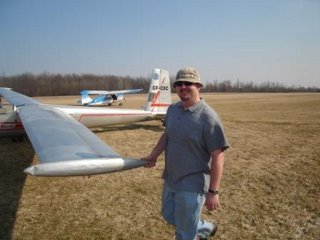
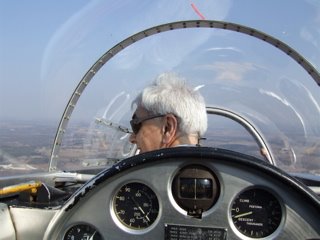 Wednesday afternoon (March 29th) flying was great with a number of people playing hooky. Springford at the controls of the Citabria and several instructors doing Spring Checkouts - Jerzy, Terry McCartney-Filgate, Rod Crocker John Brennan, Lorna Novosel and a number of SOSA members taking advantage including, Daniel MacIsaac, Jean-Marc Henry, Paul Piascik, Tomas Rezik and others. Luke Szczepeniak got a tow at 15:00 hrs and hadnt returned by 18:00 when your reporter left the field. Nice day!! We have already had over 35 flights this year!!
Wednesday afternoon (March 29th) flying was great with a number of people playing hooky. Springford at the controls of the Citabria and several instructors doing Spring Checkouts - Jerzy, Terry McCartney-Filgate, Rod Crocker John Brennan, Lorna Novosel and a number of SOSA members taking advantage including, Daniel MacIsaac, Jean-Marc Henry, Paul Piascik, Tomas Rezik and others. Luke Szczepeniak got a tow at 15:00 hrs and hadnt returned by 18:00 when your reporter left the field. Nice day!! We have already had over 35 flights this year!!